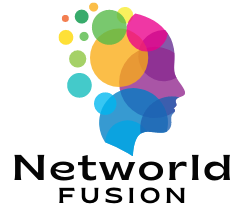Strategies for Strengthening Retirement Plans with Safe Harbor Matching
Key Takeaways:
- Understanding the principles of Safe Harbor matching in retirement planning.
- Benefits of implementing a Safe Harbor match in your company’s 401(k) plan.
- Step-by-step guidance on setting up a Safe Harbor 401(k) match.
- How Safe Harbor can improve employee retention and satisfaction.
Retirement plans are essential for employees’ financial security and help businesses retain top talent by being a significant incentive. Among the various retirement plan choices available, Safe Harbor matching receives a lot of focus. Imagine if you are curious about the concept of Safe Harbor matching. In this situation, it is an element in 401(k) plans that enables employers to add funds to their employees’ retirement savings, meeting specific regulatory standards and adding value to compensation packages. This in-depth examination of Safe Harbor matching will demonstrate its significant influence on retirement plans.
Demystifying Safe Harbor Match Contributions in 401(k) Plans
What is Safe Harbor matching? Safe Harbor matching is an employer contribution to a 401(k) plan designed to ensure the plan automatically complies with IRS rules for nondiscrimination testing. This is accomplished by offering a benefit to every qualifying staff member, regardless of their decision to join the program. The donation must adhere to specific criteria established by the IRS and can be a matching or non-elective contribution. Employers can prevent penalties and restrictions by offering a safe harbor match for their plan to pass nondiscrimination testing. Employers can avoid these complicated tests by contributing to employees’ accounts, which usually prevent a retirement plan from unfairly benefiting higher-paid employees over lower-paid ones. This simplification makes offering a 401(k) easy by ensuring a Safe Harbor match, eliminating the need for complex yearly testing.
Examining the Long-Term Benefits for Employers and Employees
The decision to incorporate Safe Harbor matching into a 401(k) plan yields a host of benefits for both the employer and their workforce. Employees experience the immediate perk of an employer contributing directly to their retirement funds, which can be a powerful motivator and supplement personal retirement savings efforts. On the other hand, employers can deduct their contributions from corporate taxes and relieve the administrative burden of the annual compliance testing associated with traditional 401(k) plans. Furthermore, the long-term value of a robust retirement package can significantly reduce turnover rates, fostering loyalty and potentially leading to higher productivity workplace-wide.
Step-by-Step Process for Implementing a Safe Harbor Match
Shifting to a Safe Harbor match format in a company’s 401(k) plan is simple yet requires careful consideration. The process involves modifying the plan document early in the plan year, creating a thorough employee notification detailing the changes, and guaranteeing prompt and precise delivery of the employer’s contributions. Employers are required to uphold the Safe Harbor match for an entire year, while employees need to understand their rights and benefits within the new system. Furthermore, the IRS sets specific deadlines for informing employees, which must be strictly followed.
The Role of Safe Harbor in Employee Retention
In today’s labor market, a compelling benefits package is crucial to an employer’s offering. A Safe Harbor match is particularly persuasive, as it speaks to a core concern of many workers: long-term financial security. By providing this benefit, employers underline their commitment to employees’ futures beyond their immediate job roles, promoting stability and trust. This investment in the workforce can be a pivotal factor in an individual’s decision to join or stay with a company, mainly when employees communicate and appreciate such benefits.
Common Misconceptions and Clarifications about Safe Harbor Match
Misconceptions surrounding Safe Harbor can deter employers from adopting what may be an ideal solution for their company’s retirement offerings. A frequent myth is the presumed high cost of implementing Safe Harbor matches. Still, when analyzing the broader context—including tax savings and the value of a consistent and satisfied workforce—the perceived high cost fades compared to the benefits. Another common misunderstanding is the lack of flexibility with Safe Harbor contributions; however, employers can choose from several Safe Harbor formulas to best fit their company’s and employees’ needs.
Comparing Safe Harbor to Other Retirement Match Strategies
There are distinct differences when comparing Safe Harbor to other matching strategies. Whereas traditional 401(k) plans demand annual nondiscrimination testing to satisfy contribution fairness requirements, Safe Harbor plans offer a way to circumvent this process, potentially reducing administrative efforts and costs. Additionally, Safe Harbor plans typically require employers to fully vest contributions immediately, which can be more attractive to employees, providing them with immediate ownership of their employer’s contributions to their retirement funds.

Devising a Communication Strategy for Introducing Safe Harbor Matches
Successful implementation of any new company benefit, especially retirement-related ones, depends heavily on robust communication strategies. Employers should prioritize clear, transparent, and continuous dialogue with their employees. It may involve informational seminars, detailed documentation, and one-on-one discussions to ensure every team member understands the Safe Harbor provisions and how they benefit them. Such educational efforts are invaluable for seamless transitions, maximizing employee appreciation, and utilizing the new benefits.
The Future of Retirement Planning: Trends to Watch
It is essential to stay aware of trends in retirement planning due to the continuous changes in employee benefits. Advancements in financial technology, workforce demographic shifts, and legislative changes indicate that the retirement savings landscape will keep evolving. Employers and employees would gain advantages by staying updated and ensuring readiness to adjust to employee benefits and regulations changes.
Employers and plan administrators should review the IRS rules on 401(k) Plan Qualification requirements to understand retirement plans’ intricacies and compliance mandates. Keeping current with these guidelines is essential for effectively managing retirement benefits. Moreover, the U.S. Department of Labor provides crucial information on employee benefit plans to help employers understand their obligations, the advantages of providing these benefits, and directing them toward the most effective strategies in the constantly evolving retirement planning field.
